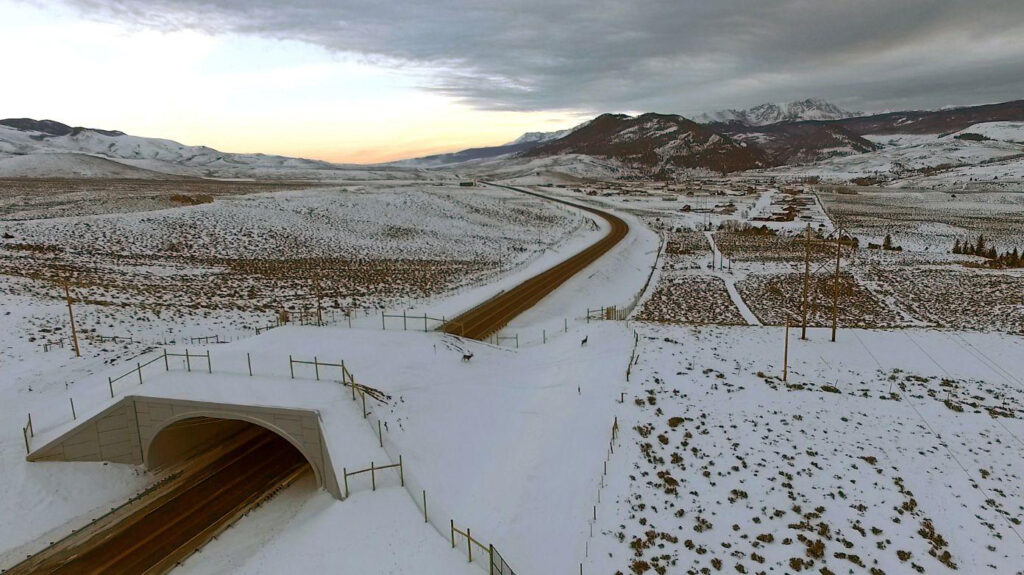
Photo: Jerry Neal, Colorado Parks & Wildlife
A new publication by Conservation Science Partners scientists and collaborators addresses a critical gap surrounding highway wildlife crossings: the need to expressly consider the impacts of climate change. Published in Frontiers in Ecology and the Environment, the paper underscores that wildlife crossings are crucial to reducing wildlife mortality and enhancing habitat connectivity—not to mention ensuring driver safety—and yet rarely is climate change considered in their planning and prioritization. The paper synthesizes the science surrounding wildlife crossings and climate adaptation, offers expert-informed recommendations for incorporating climate considerations, and demonstrates the importance of doing so through a case study in southwestern Colorado.
The Colorado case study puts those recommendations into action by empirically prioritizing candidate wildlife crossing locations to explicitly account for how climate change may shift wildlife movements—in this case, elk migration. CSP Senior Scientist and paper co-author Dr. Justin Suraci led this modeling effort with a novel approach to map where elk migration routes are likely to shift in the future—and thus where they are likely to intersect with roadways—by accounting for projected changes in temperature, precipitation, vegetation cover, land-use, and traffic. These models revealed which candidate wildlife crossing locations are likely to support elk movement both today and in a warmer future. The results suggest possible targets for initial climate-informed wildlife crossing investments.
“Our findings show that we can identify places for reducing wildlife-vehicle collisions now that are also likely to remain effective as environmental conditions change,” says Suraci. “By planning with climate change in mind, we can create long-term solutions for both animals and people.”
The expert-informed recommendations that underpin the Colorado case study emerged from a working group of over a dozen climate, wildlife, and road ecology experts convened in 2022. These experts drafted a consensus statement urging government officials at all levels to consider climate change when planning and prioritizing structures that ensure safe passage for fish and wildlife under and over highways. As appetite grows and funding opportunities emerge for protecting movement corridors and constructing wildlife crossings—for example, through the $350 million Wildlife Crossing Pilot Program funded under the Bipartisan Infrastructure Law—there is heightened need and opportunity for developing infrastructure that is sited and designed in ways that account for the impacts of climate change.
Building on the success of the Colorado case study, CSP and collaborators from ECO-resolutions and The Pew Charitable Trusts are now working with other states like Nevada to support their connectivity planning efforts in a manner that expressly accounts for climate change impacts. CSP Senior Scientist and co-author Dr. Caitlin Littlefield says: “We are energized by the success of our work in Colorado and Nevada and are excited to extend this framework across the country to protect wildlife and drivers and enhance the resilience of our ecosystems and infrastructure in a warming world.”
CSP’s growing efforts to apply the lens of climate adaptation to connectivity and wildlife crossing planning are documented here.

